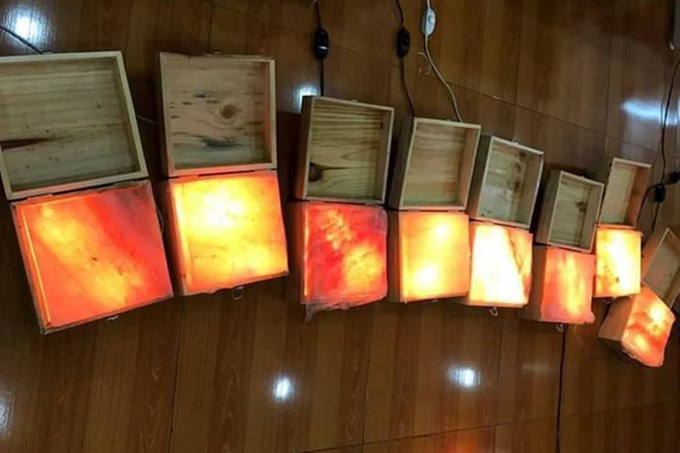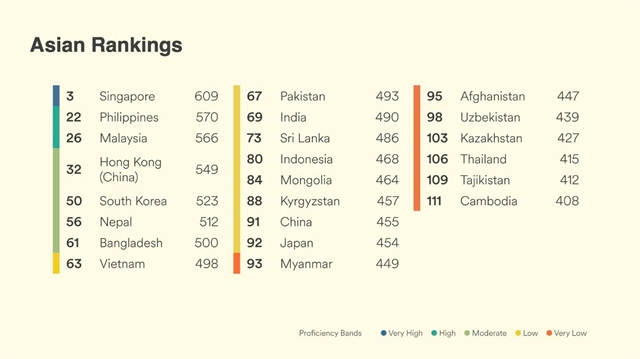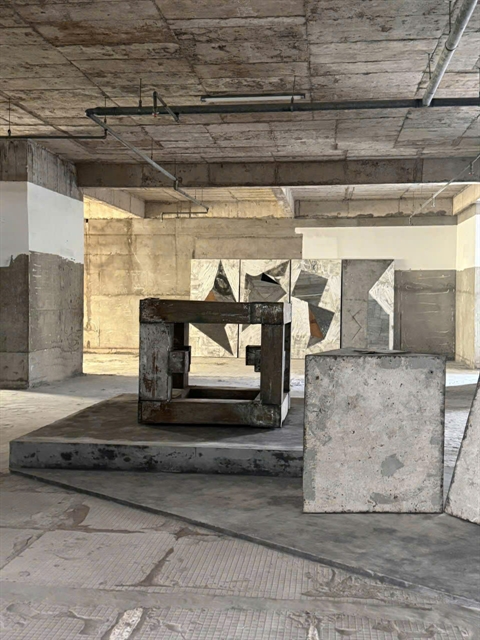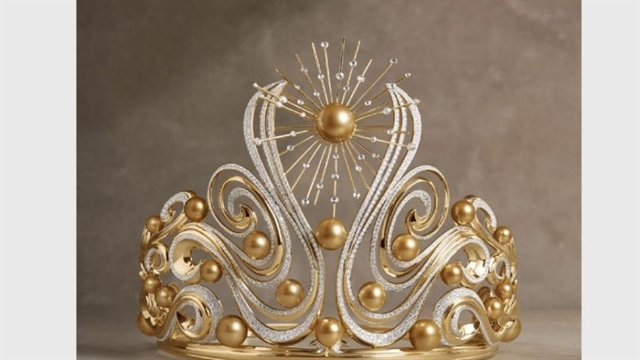 Society
Society

A product called Himalayan pink salt has been gaining popularity in the health and beauty market in Việt
 |
| The “Himalayan salt lamps” sold as heat lamps in Việt Nam. — Photo laodong.com.vn |
HÀ NỘI — A product called Himalayan pink salt has been gaining popularity in the health and beauty market in Việt
The so-called salt is sold in mass quantities on several websites, which claim it will “help prevent electromagnetic waves from electronic devices” and “purify the air” when heated, the newspaper reported. Some advised customers to use it instead of regular salt for their daily meals, since this pink salt “increases the amount of calcium in the body” and helps with the treatment of blood pressure and other diseases.
Several spa facilities in Hà Nội are using Himalayan salt stones in their bath, massage and sauna services. Some traditional medicine establishments have also started using the stones to provide foot massages for customers, or incorporating them into the massage tables for full body massage.
Sold at VNĐ450,000-800,000 (US$20-35) each depending on their sizes, the salt stones have become a new means of earning a living for several people. During the winter peak season, a stone seller earns VNĐ20-50 million ($877-2,200) per month, Lao Động reported.
However, health experts in Việt
Not only have its benefits not been proven, some diabetic patients got severe burns after using the “Himalayan salt lamps” to warm their feet.
Amongst the most popular products in the market, the lamps consist of a wooden box filled with one or two salt blocks, and a light bulb placed inside the blocks that can be lit by connecting to an electricity outlet.
The lamps were advertised to help cure numbness and tingling in the limbs – a symptom diabetic patients often experience – if the patients use them to warm their feet for 20-30 minutes a day. But Phạm Văn P., 52, a patient with Type 2 diabetes in the
Last month P. got wide and deep burns in his soles because the salt blocks got too hot, but he could not feel them because of the numbness. “I didn’t feel anything when placing my feet on the blocks,” he told Lao Động. “Only when I decided to stop using the lamp did I realise my feet had been burnt.”
Nguyễn Ngọc Thiện, deputy head of the Faculty of Foot Care at the National Hospital of Endocrinology, said that diabetic patients should not use these salt lamps to relieve their numbness.
“Diabetic patients can’t control their blood sugar levels and are unable to feel temperature,” he said. “One absent-minded moment and they can get burned easily.” — VNS









